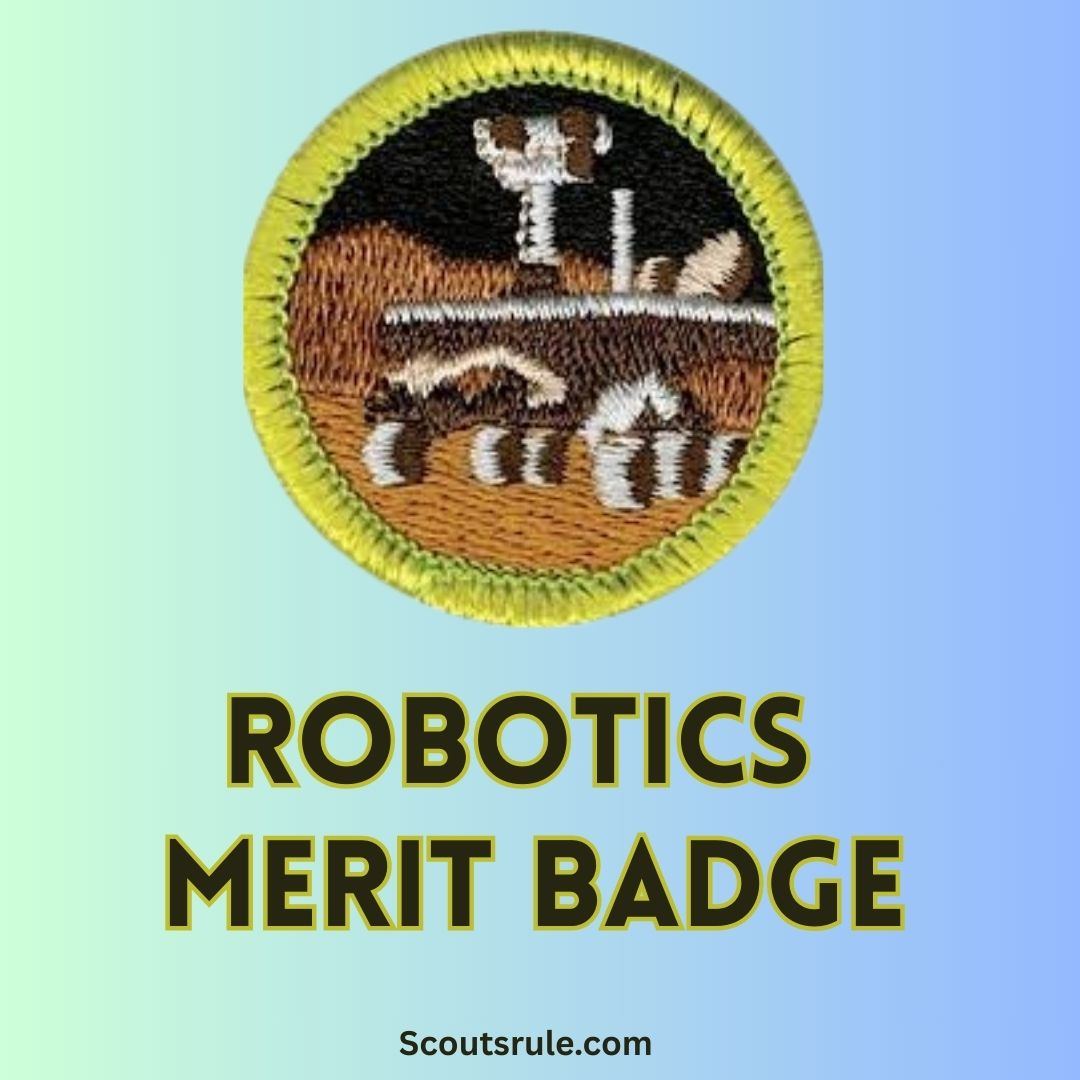
Robotics is a vibrant and rapidly evolving field that blends engineering, computer science, and creativity to create machines that perform tasks—from the simple to the astounding. Earning the Robotics Merit Badge enables Scouts to explore fundamental robotics concepts, learn proper safety and operational techniques, and appreciate the diverse applications of robots in our world today. This guide outlines the merit badge requirements and provides context on the evolution of robotics, its major fields, and the career paths that await those inspired by technology.
Post Contents
1. Robotics Merit Badge Requirements
The Robotics Merit Badge challenges you to learn how robots work, understand their capabilities and limitations, and gain knowledge about appropriate safety measures while working in robotics environments. Key requirements include:
- Safety: Explaining the hazards you might encounter when working with robots, which involves discussing both general safety and first aid to address injuries like cuts, eye injuries, or burns.
- Understanding Robotics and Modern Uses: Describing what robots are capable of today, the differences between remote-control, telerobots, and autonomous systems, and explaining movement methods beyond conventional wheels or tracks.
- Core Knowledge: Discussing major fields in robotics (including operator interface, mobility, manipulators and effectors, programming, and sensing), along with the essential elements that compose a robot’s architecture.
In your discussions with your merit badge counselor, you will be expected to demonstrate both theoretical knowledge and practical skills, thereby showing a well-rounded competency in robotics.
2. The Four D’s of Robotics
A central part of modern robotics is framed by what are often called the Four D’s. These steps provide a structured approach to designing, building, and deploying robotic systems:
- Discover:
Research and explore the needs and challenges that a robot might address. This phase involves gathering information, identifying problems, and studying existing solutions. Discovering the fundamental requirements helps guide the design. - Design:
Develop a conceptual plan for your robot. In this phase, you outline the robot’s capabilities, select hardware and software components, plan for user interfaces, and draft mechanical and electrical layouts. Design is both creative and analytical—it’s your blueprint for success. - Develop:
Build and program the robot. This stage includes assembling parts, integrating sensors and actuators, writing code to control the robot’s behavior, and testing individual subsystems to ensure they work together seamlessly. - Deploy (or Demonstrate):
Finally, put your robot into action. Whether it’s a simple demonstration of movement or a complex operation in a designated environment, deployment tests the robot’s functionality and effectiveness. Feedback from deployment is critical and may lead to further iterations.
3. Five Centuries of Robots
While robotics as we know it is a modern pursuit, the conceptual evolution of automata and intelligent machines spans centuries. In this guide, the “five centuries of robots” is used to categorize major areas of development and application:
- Artificial Intelligence:
The idea of machines that can “think” dates back centuries, but modern artificial intelligence (AI) has revolutionized robotics. Today, AI allows robots to learn from experience, adapt to new conditions, and even perform complex decision-making tasks that mimic human thought. - Human and Robot Teams:
Increasingly, robots are being integrated as team members with humans. Whether in search and rescue operations or collaborative assembly lines, effective interaction between humans and robots is enhancing productivity and safety. - Industrial Robots:
Automation grew exponentially with the advent of industrial robots. Designed to perform repetitive, hazardous, or highly precise tasks, robots in manufacturing set the standard for efficiency and quality control, reshaping entire industries. - Robots as Explorers:
Robots have taken humanity’s quest for discovery to new heights. Exploration robots are invaluable in environments that are too dangerous, remote, or inaccessible for humans—such as in space, the deep ocean, or volcanically active regions. - Personal Robots:
Finally, personal robots are becoming a ubiquitous part of everyday life. These include household assistants, educational companions, and devices designed for entertainment and personal productivity.
Each of these areas continues to evolve, reflecting our growing reliance on robotics in virtually every facet of modern life.
4. Major Fields of Robotics
Robots are complex systems built from many integral parts. The following major fields provide a framework for understanding how robots function:
- Operator Interface:
This field focuses on the way humans interact with robots. Effective interfaces ensure that commands are clear and that users can monitor and control the robot easily. This includes control panels, remote interfaces, and even voice or gesture-based systems. - Mobility or Locomotion:
Mobility addresses how a robot moves. Beyond traditional wheels and tracks, robotics now incorporates legs, treads, and advanced propulsion systems that are designed for specific environments. Mobility is critical for navigating obstacles and operating in diverse terrains. - Manipulators and Effectors:
These are the “hands” and “arms” of a robot. Manipulators allow robots to interact physically with their environment, from gripping objects to performing intricate assembly tasks. Effectors refer to the tools attached to these manipulators, such as grippers, welding torches, or surgical instruments. - Programming:
At the heart of robotic function lies the software that tells the robot what to do. Programming involves writing algorithms that govern the robot’s behavior, from simple tasks like line following to complex decision-making routines using artificial intelligence. - Sensing and Perception (Sensors):
For a robot to operate autonomously, it must sense its environment. This field covers a wide array of sensors including cameras, infrared sensors, ultrasonic sensors, and more. These sensors provide the data needed for navigation, object recognition, and environmental interaction.
By understanding each of these fields, Scouts can appreciate the intricacy of robotic systems and the interdisciplinary nature of robotics.
5. Careers in Robotics
An exciting aspect of the Robotics Merit Badge is exploring career opportunities. Robotics is a rapidly growing field with wide-ranging applications. Here are some major career sectors:
- Exploration:
Robots designed for exploration are used in space missions, underwater research, and environmental monitoring. Careers in this area may involve working for organizations like NASA or private space exploration companies. - The Military or Law Enforcement:
Robotics in security and defense includes bomb disposal robots, unmanned aerial vehicles (drones), and reconnaissance systems. Professionals in this field work on the forefront of technology to ensure public safety and national security. - Medicine:
In the medical field, robots assist in surgeries, rehabilitation, and even precision drug delivery. Careers can range from biomedical engineering to robotic surgery specialists. - Industry:
Industrial robots are a fixture in manufacturing and assembly. Engineers and technicians design, maintain, and optimize these systems, improving efficiency and quality control in production lines. - Personal Robots:
The development of personal robotic assistants—used in homes, schools, and businesses—offers another promising career path. This field involves designing robots that improve daily life, from automated cleaning devices to interactive educational tools.
Each of these career paths uses the core principles of robotics in distinctive ways, offering opportunities to work in diverse environments and solve unique problems.
6. Robotics Safety
Safety is paramount when working with robotics. The Robotics Merit Badge requires an in-depth understanding of both hazard anticipation and prevention, as well as first aid practices specific to robotics activities.
1(a) Robotics Safety: Anticipating and Responding to Hazards
- Anticipating Hazards:
Recognize that robotics work may involve electrical components, moving parts, and heavy machinery. The hazards include electrical shock, mechanical injuries from moving parts, pinch points, and even chemical burns if corrosive substances are used (for example, in battery handling). - Responding to Hazards:
Establish protocols such as ensuring machinery is shut off before maintenance, using appropriate safety barriers, and wearing personal protective equipment (PPE) like safety goggles, insulated gloves, and closed-toe shoes. - Risk Mitigation:
Carry out risk assessments before engaging in hands-on work and ensure all safety procedures are followed meticulously.
1(b) Robotics Safety: First Aid and Prevention
- First Aid:
Be prepared to treat injuries common in robotics workshops, such as cuts, burns (chemical or thermal), and eye injuries from flying debris. Familiarize yourself with the location of first aid kits and ensure you know basic techniques like cleaning and dressing wounds. - Prevention:
Emphasize training in the proper handling of equipment, regular safety drills, and adherence to instructions. Prevent accidents by maintaining a clutter-free work area and by using tools only as instructed.
7. Understanding Robots
2(a) Understanding Robots: Capabilities and Modern Uses
- Capabilities:
Modern robots are capable of performing a wide range of tasks—from simple repetitive actions in manufacturing environments to complex decision-making tasks supported by artificial intelligence. They can sense their surroundings, interact with their environment, and communicate with human operators. - Modern Uses:
Today, robots are found in automotive assembly lines, classrooms (as educational tools), hospitals (assisting in surgery and rehabilitation), and even in homes as personal assistants. Robots are so versatile that they’re continually repurposed to improve efficiency, safety, and quality of life.
2(b) Types of Robots: Remote-Control, Telerobots, and Autonomous
- Remote-Control Robots:
These robots are operated by humans from a distance. They are commonly used in hazardous environments like bomb disposal or underwater exploration. - Telerobots:
Similar to remote-control robots, telerobots provide feedback (often visual and sensory) to the operator, allowing for refined control in real time. They are used in fields such as surgery or space exploration. - Autonomous Robots:
These robots are programmed to make decisions on their own without continuous human supervision. They use sensors and algorithms to navigate, perform tasks, and adjust their behavior to changing conditions.
2(c) Robot Movements: Beyond Wheels and Tracks
- Innovative Locomotion:
In addition to the familiar wheels and tracks, modern robots employ a variety of movement methods. Some robots use articulated legs or even flexible, snake-like bodies, which allow them to navigate rough and irregular terrain. Techniques like hopping, crawling, or swimming expand the range of environments in which robots can operate. - Appropriate Applications:
Each mode of movement is selected based on the task at hand—for example, legged robots are preferred in environments with obstacles where wheels might get stuck, while drones (a form of aerial movement) are ideal for situations that require quick aerial reconnaissance.
8. Core Elements of Robotics
At the heart of every robot lies a set of core elements that enable its function. These include:
- Mechanical Structure (Chassis):
The frame, limbs, and body that house all components. This structure must be robust enough to handle the tasks assigned to the robot. - Sensors:
Devices that allow the robot to perceive its environment. These include cameras, ultrasonic sensors, infrared sensors, and more. Sensors provide essential data for navigation, obstacle detection, and task performance. - Actuators and Effectors:
The motors, servos, and other devices that convert energy into movement, allowing the robot to interact with its environment. They are essentially the “muscles” of the robot. - Control Systems and Software:
The “brain” of the robot. Microcontrollers or computers run the software that processes sensor data, makes decisions, and sends precise commands to the actuators. Programming these systems is a critical component of robotics. - Power Supply:
Batteries or other energy sources that supply the necessary power for the robot. The efficiency, capacity, and management of power directly affect the performance and longevity of the robot.
Understanding these core elements is essential for grasping how complex robotic systems are designed, built, and optimized.
9. Careers in Robotics
The growing field of robotics offers numerous opportunities across different sectors. Here are some of the key career areas:
- Exploration:
- Robots are pivotal in space exploration, oceanography, and environmental monitoring. Careers in this field may involve working with organizations like NASA or private aerospace companies to design exploration robots.
- The Military or Law Enforcement:
- Robots are integral to bomb disposal, surveillance, and reconnaissance. Professionals in this sector work on cutting-edge technologies to protect personnel and improve strategic operations.
- Medicine:
- Medical robotics assists in surgeries, patient care, and rehabilitation. Careers here include designing and maintaining robotic surgical systems or developing assistive robotic devices for healthcare.
- Industry:
- Industrial robots revolutionize manufacturing, assembly, and quality control in factories. Robotics engineers, technicians, and researchers work together to optimize production lines and increase efficiency.
- Personal Robots:
- The development of consumer robotics—ranging from educational robots to domestic assistants—creates opportunities in product design, software development, and human–machine interaction.
Exploring these fields prepares you for a future where robotics play an increasingly prominent role in everyday life.
10. Conclusion
The Robotics Merit Badge is a gateway to understanding not only how robots work but also how they are reshaping industries, exploring new frontiers, and transforming our everyday lives. By mastering the requirements—from safety protocols and fundamental components to modern applications and career opportunities—you’ll build a strong foundation for further exploration into robotics and related fields. Let this journey ignite your curiosity, challenge your existing skills, and inspire you to become a leader in the dynamic world of technological innovation.
Frequently Asked Questions (FAQs)
General Robotics Merit Badge Questions
Q: What is the main focus of the Robotics Merit Badge?
A: The badge is designed to help Scouts understand robotics from multiple perspectives. It covers safety, design, and core elements of robotics, explores historical and modern applications, and discusses careers in the field.
Q: How are the Robotics Merit Badge requirements structured?
A: Requirements include safety instructions; discussions about what robots can do; the differences between remote-controlled, telerobots, and autonomous robots; exploration of various robot movements; and an understanding of the core elements that make up a robot.
The Four D’s and Evolution of Robots
Q: What are the “Four D’s of Robotics”?
A: They serve as a framework for approaching robotics projects: Discover (research and identify needs), Design (develop a conceptual plan), Develop (build and program your robot), and Deploy (test, refine, and present your creation).
Q: What is meant by “Five Centuries of Robots”?
A: This term categorizes key historical and modern perspectives in robotics. It includes the evolution of artificial intelligence, collaboration between humans and robots, the rise of industrial automation, the use of robots for exploration, and the advent of personal robots that interact with us in day-to-day life.
Major Fields and Careers in Robotics
Q: What are the major fields of robotics?
A: They include:
- Operator Interface: How operators control robots.
- Mobility/Locomotion: How robots move.
- Manipulators and Effectors: The “hands” and “tools” robots use.
- Programming: The software and algorithms behind robotic functions.
- Sensing and Perception: How robots gather information via sensors.
Q: What career opportunities exist in robotics?
A: Robotics opens up careers in exploration (space and deep-sea research), military or law enforcement (security and hazardous material handling), medicine (robot-assisted surgeries), industry (manufacturing automation), and the developing market of personal robots.
Safety, Understanding, and Core Elements
Q: What does Robotics Safety entail?
A: It includes anticipating potential hazards (electrical, mechanical, chemical), using proper personal protective equipment (PPE), and having established protocols for first aid and accident prevention during robotics activities.
Q: How are different types of robots categorized?
A: Robots are often classified into remote-control (direct human control), telerobots (provide sensory feedback), and autonomous (operate independently based on pre-programmed instructions) systems. Additionally, modern robots employ movement methods beyond traditional wheels or tracks, such as legged locomotion or multi-axis movement systems.
Q: What are the core elements of a robot?
A: These consist of mechanical structure, sensors and actuators, control systems (hardware and software), and power supplies. Together, they enable a robot to interact with its environment efficiently.
This guide provides a broad and detailed overview of the Robotics Merit Badge, ensuring you are well prepared for both the theoretical discussions and practical demonstrations required. Whether you are a beginner or already familiar with robotics, this journey into the world of robots is bound to deepen your understanding and potentially spark a long-term interest in technology and innovation.

Hi, Robin here, A former lead Scout and here I share my inspiring stories about USA Scouts, leadership, adventure, how to guides and more.






